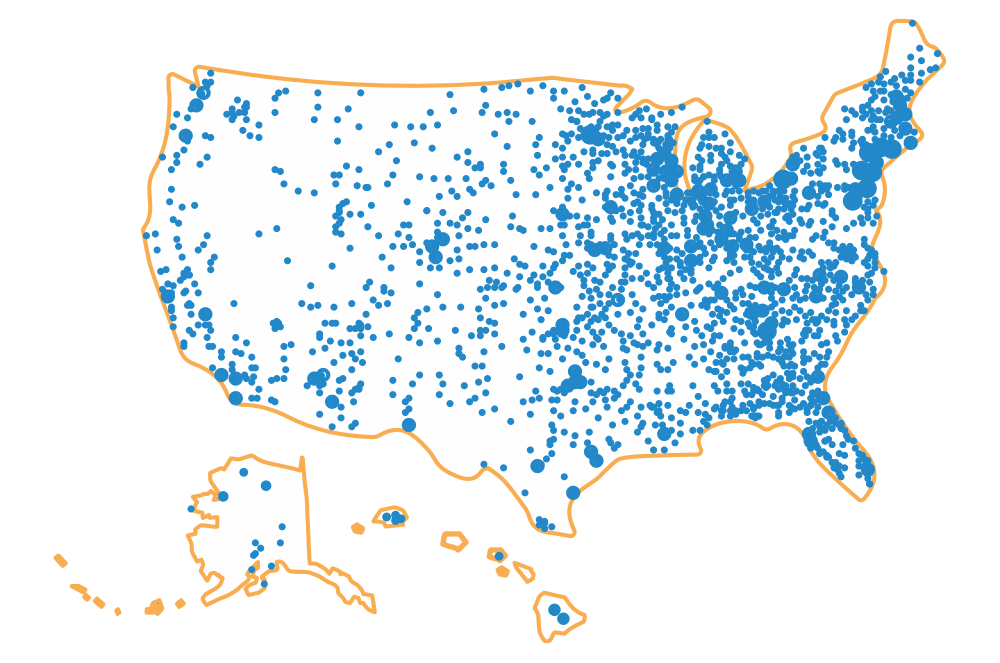It’s been a long runaway but now it’s almost time for your child or grandchild to launch into their college or career training. You’ve been preparing for this next stage of their education for years by saving in your Ohio 529 account, which will pay for their qualified costs at four-year colleges and universities; two-year community college; trade, technical and vocational schools; apprenticeships; and certificate and credential programs.
Now it’s your students’ turn to complete their to-do checklist through their senior year of high school as they prepare for their higher education.
ACT and SAT exams
If your child took these exams in their junior year of high school, then you can move onto the next step. If not, then make sure your student has signed up to take the SAT and the ACT exams as prospective colleges are looking for these scores.
College applications
Hopefully you fit in some college campus visits over the summer. Or maybe your family is visiting your child’s top picks this fall.
As your student narrows down the schools they’re interested in attending, start reviewing the admissions applications to see what information to collect. Your child should also be honing their college admissions essays to easily adapt them to each institute’s application.
Also, your child should check in with their school counselor to make sure that they are on track to graduate at the end of their senior year. If not, this fall is the right time to correct that issue before it can push back when they graduate from high school. They should also ask their counselor, favorite teachers, and coaches for letters of recommendation to add to those applications.
As your child’s senior year is a whirlwind of events and emotions for everyone, it’s a good idea to create a checklist of test dates, college application due dates – including early decision, and financial aid deadlines to keep track of all the important times. Make note of any other information you may need to gather to add to the admission applications as well. Then send that paperwork out!
In January, you will probably need to send your child’s first semester transcript to the prospective schools. Check in with the guidance office to find out what you will need to do to send that important file over to them.
Also, remind your child that they still need to keep their grades up throughout their senior year as the colleges will still be choosing whether to admit them. So, all their academic scores and activities throughout their entire senior year will matter.
Don’t forget about FAFSA this fall
The Free Application For Federal Student Aid (FAFSA) started to accept applications for the 2026-2027 academic year on Oct. 1. Whether your child will start college next school year or continue their higher education, collecting the necessary information this fall to fill out this form for free financial aid.
Why is it important to fill out the FAFSA? Not only does FAFSA determine what federal financial aid offers that your student might receive, but other organizations—like your home state, the universities and colleges to which your student has applied, and other private organizations—also use the information found on FAFSA to determine institutional grants or loans to offer students.
Remember, it’s always best to complete FAFSA as soon as possible as that is when the pool of funds is at its largest.
Scholarships
Another source of free money is scholarships, which can help extend your savings in your Ohio 529 account. During their senior year, have your child look for scholarships to supplement any financial aid and the savings in your Ohio 529 account. Their guidance counselor is a good first resource to access. Counselors have access to resources and scholarship tools to point you and your student in the right direction. Counselors also can offer guidance on scholarship essays and help your child prepare for any scholarship interviews. They can also assist your students in identifying teachers to ask for recommendation letters to strengthen their applications.
Take advantage of the free online scholarship search sites like Sallie Mae, FinAid, SmartScholar, and FastWeb to name a few. On these sites, your child will create a profile with their academic scores; community and volunteer service; and athletic, academic or other extracurricular activities. After supplying that information, students will be matched with scholarships for which they are eligible. FinAid also has a list of the more unusual available scholarships.
Sallie Mae also offers the Paying For College Resource. The website assembles free tools, videos, and checklists to follow while preparing for your children’s higher education. It even shows how to understand your financial aid letters, once you receive them. There’s also a monthly $2,000 scholarship that your child can register for and they don’t even have to write an essay.
U.S. Department of Labor has a free scholarship search tool and also offer guidance on what sources to tap for more information.
Also, have your child research into what scholarships are available locally and statewide. These scholarships draw from a smaller pool of applicants so there may be less competition and therefore, better odds of receiving these scholarships.
Be sure to apply for small dollar scholarships. If your student earns several of these, their scholarship total will grow. There may also be fewer applicants for these scholarships so your student’s application may stand out in a smaller crowd.
An important note: you should not have to pay a fee to apply for a scholarship. If an organization asks for a fee or credit card number, do not share that information with them and take the scholarship search elsewhere.
Acceptance letters
The long-awaited acceptance letters and financial aid offers should start arriving in spring. Review the school’s deadlines of when your child must commit to attending the school as well as when the deposit must be received. As for the financial aid offers, read over how to accept the aid. You can always request that the school revisits their offer based on any substantial changes in your family’s circumstances. If your child is selected by more than one college, please let the other ones know of your child’s choice. Lastly, if your student is wait-listed at their dream school, contact the admission office to re-confirm their interest in attending.
Visit Ohio 529 online today to start saving for your child’s or grandchild’s future education with as little as $25. A 529 account can be used for whatever school comes after high school—including four-year colleges and universities, community colleges, tech, trade or vocational schools, apprenticeships, and certificate or credential programs. Learn, plan, and start with Ohio 529 today at CollegeAdvantage.com.


















